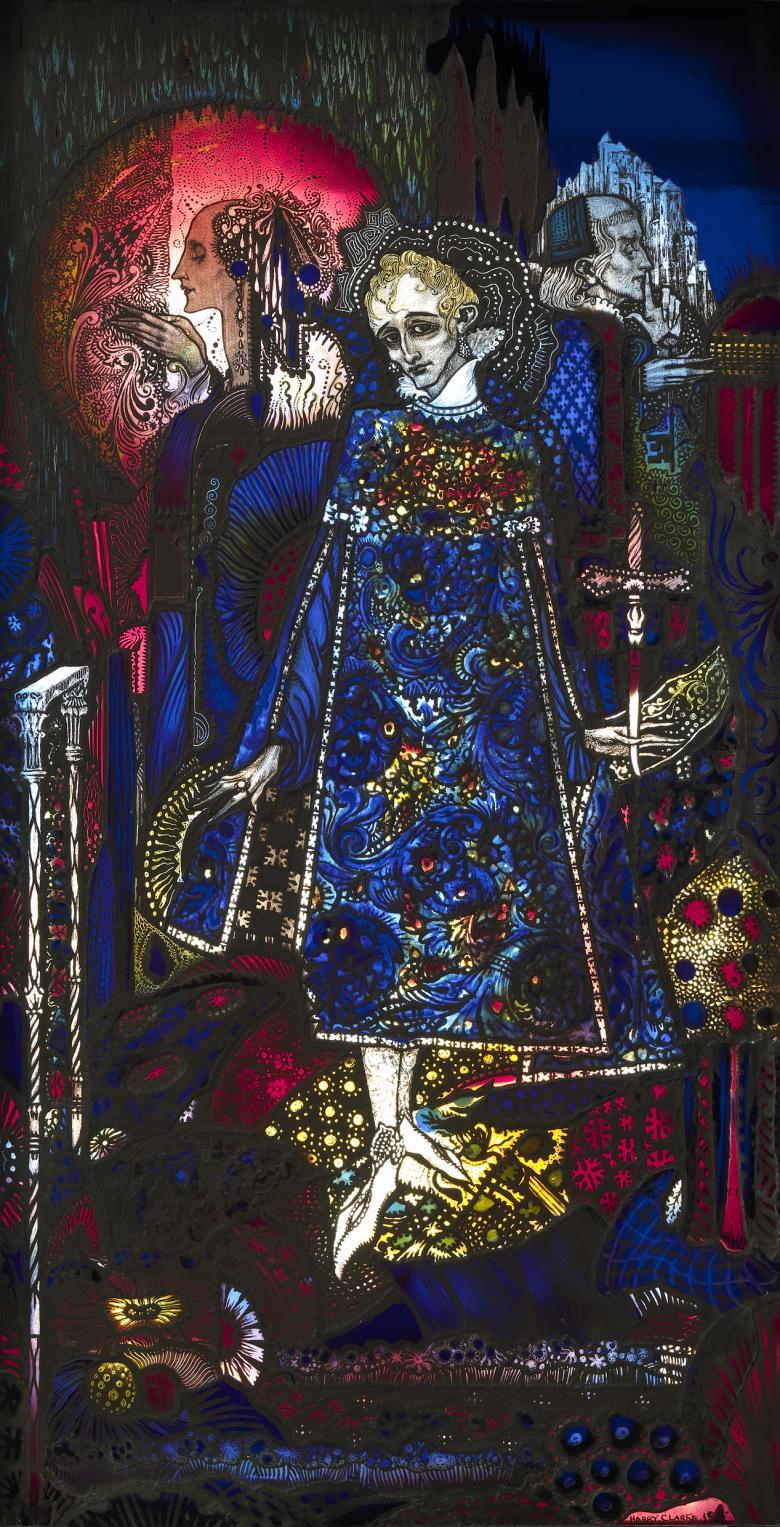
Room 20
Can you find Harry Clarke (1889–1931), The Song of the Mad Prince, 1917, in this room?
Listen to the audio
Continue on the tour
- Continue into the next room – Room 21. Here you'll find a painting by Francis Danby.
- Or, you can take another look at all the audio tracks and choose one you'd like to listen to next.
Transcript
[Magical musical-box-type music]
Íde:
This room reminds me of a jewellery box – all dark but for the colours glowing in front of us, like gems.
Eoin:
And why is it so dark?
Íde:
It’s to help us see the work of art in here. Not all artists use paint and brushes – some work with glass, like this artist, Harry Clarke, who was famous for working with glass.
Eoin:
You mean like coloured windows?
Íde:
Yes. To see these glass pictures properly, you need one magic ingredient…
Eoin:
Light! I can see it behind the glass, making the colours shine. Who’s that boy or man dressed all fancy and wearing pointy shoes like they wore in the old days?
Íde:
He’s a prince, and he comes from an poem called The Song of the Mad Prince. The poem doesn’t really tell us why the prince was mad, so we can build our own story around him.
Eoin:
I’m guessing that those are his mum and dad behind him, on the left and right. They look like they’re planning or plotting something. I think the prince looks more sad than mad.
Íde:
Tell me, how has the artist managed to make him look so sad?
Eoin:
Well he’s thin, like he hasn’t eaten, and he’s pale, like he hasn’t slept, and has dark shadows under his eyes. And all the lines on his face – his eyes, eyebrows and even ears – are sloping down, like they’re sad too.
Íde:
Lines are very important for drawing feelings or expressions. And they’re also important in stained glass, because there are always lines around the different pieces of glass.
Eoin:
It’s got me thinking about feelings and expressions, and which ones I’ll have in my masterpiece!
Íde:
And you, if you had to draw one feeling or emotion, which would it be and how would you draw it. Tell whoever you’re with.
Continue your journey
-

Family Audio Tour: Portrait of Charles Coote
Not on display at the moment
-

Family Audio Tour: The Cottage Girl
A painting by Thomas Gainsborough
Discover more
-

The Elf-hill by Harry Clarke (1889-1931)
A magical illustration by the Dublin-born artist
-

Sensory Workshop: Create your own 'stained glass'!
Try out this exciting step-by-step activity
-

Drawing Inspiration: Harry Clarke (1889-1931)
An illustration of The Travelling Companion fairy tale.
-

Ceardlann Gloine Dhaite Céadfach
Déanfaidh an ghníomhaíocht seo céadfaí do pháiste a mhealla


